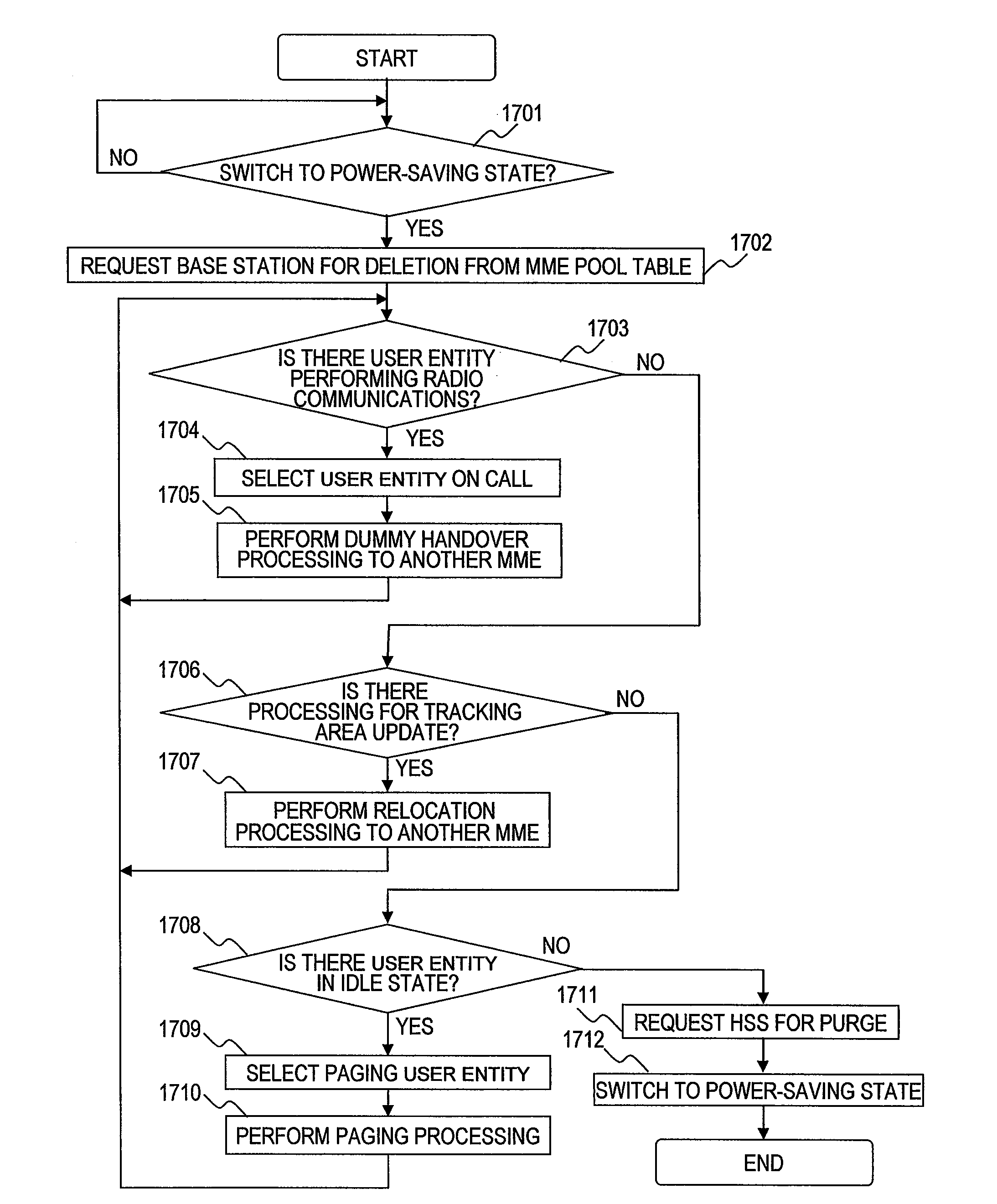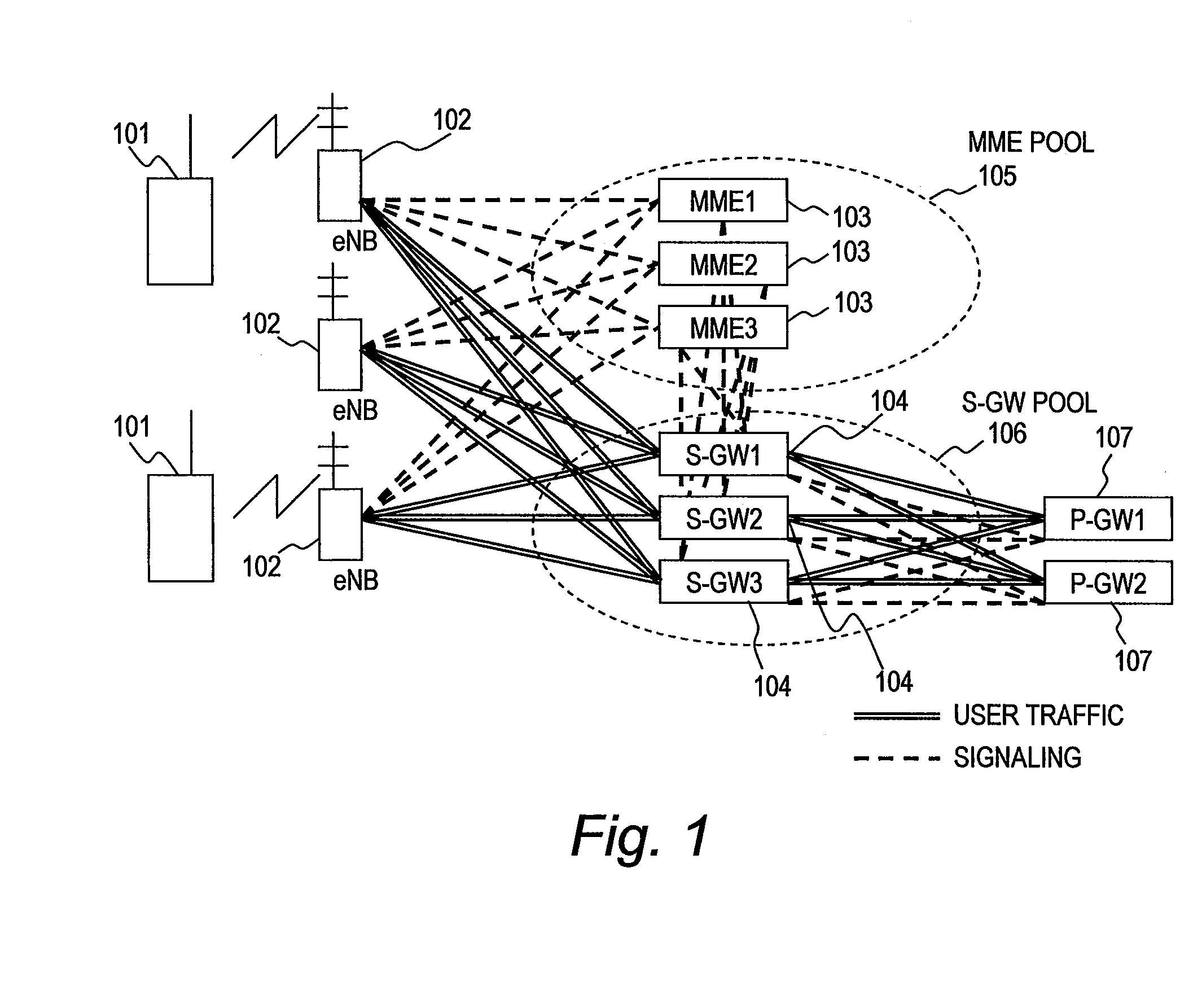Mobile communication system for low power consumption, call control server and access gateway
a mobile communication system and power consumption technology, applied in the field of mobile communication systems, can solve the problems of increasing the power consumption of the processor and increasing the ict equipment, and achieve the effect of reducing the power consumption of the system
- Summary
- Abstract
- Description
- Claims
- Application Information
AI Technical Summary
Benefits of technology
Problems solved by technology
Method used
Image
Examples
first embodiment
[0034]FIG. 1 is an explanatory diagram illustrating an example of a configuration of a mobile communication system according to a first embodiment of this invention.
[0035]FIG. 1 illustrates an example of a configuration of a long term evolution (LTE) system being a 3.9-generation mobile communication system.
[0036]The mobile communication system according to the first embodiment includes a plurality of base stations (eNBs: eNodeBs) 102, a plurality of mobility management entities (MME, mobility management call control servers) 103, a plurality of service gateways (S-GWs) 104, and a plurality of packet data network gateways (P-GWs) 107. The base station 102 connects a line to a user entity 101 located in a tracking area (a location area) of its own station.
[0037]The MME 103 receives a tracking area update request (a location registration request) transmitted from the user entity (mobile terminal) 101. Further, the MME 103 executes location management of the user entity 101, an authent...
second embodiment
[0127]Hereinafter, description is made of a processing of reaccommodating the user entity 101 in the idle state accommodated in the CPU blade 201 that operates as the MME 103 (and the S-GW 104) into another CPU blade 201.
[0128]FIG. 12 is a sequential diagram illustrating a processing for relocation of the user entity in the idle state according to a second embodiment of this invention.
[0129]A user entity (UE) 1201 is the user entity 101 in the idle state. A base station (eNodeB) 1202 is the base station 102 that communicates with the user entity 1201. A source MME 1203 is the MME 103 at the relocation source. A target MME 1204 is the MME 103 at the relocation target. A source S-GW 1205 is the S-GW 104 at the relocation source. A target S-GW 1206 is the S-GW 104 at the relocation target. A P-GW 1207 is the P-GW 107 that provides the user entity 1201 with a service. A home subscriber server (HSS) 1208 is a server for managing the location of the user entity 1201.
[0130]First, the user ...
third embodiment
[0155]Hereinafter, description is made of a processing of relocating the user entity 101 in the idle state which is accommodated in each of the CPU blades 201 operating as the MMEs 103 (and S-GWs 104) to another CPU blade 201 by changing a tracking area ID (TAI) included in the broadcasting control channel (BCCH) transmitted from the base station 102.
[0156]FIG. 15 is a sequential diagram illustrating a processing for relocation of the user entity in the idle state according to a third embodiment of this invention.
[0157]A user entity (UE) 1501 is the user entity 101 that executes the tracking area update based on a change of the tracking area ID (TAI) included in the received broadcasting control channel. A base station (eNodeB) 1502 is the base station 102 that changes the TAI of the broadcasting control channel. A source MME 1503 is the MME 103 at the relocation source. A target MME 1504 is the MME 103 at the relocation target. A source S-GW 1505 is the S-GW 104 at the relocation s...
PUM
 Login to View More
Login to View More Abstract
Description
Claims
Application Information
 Login to View More
Login to View More - R&D
- Intellectual Property
- Life Sciences
- Materials
- Tech Scout
- Unparalleled Data Quality
- Higher Quality Content
- 60% Fewer Hallucinations
Browse by: Latest US Patents, China's latest patents, Technical Efficacy Thesaurus, Application Domain, Technology Topic, Popular Technical Reports.
© 2025 PatSnap. All rights reserved.Legal|Privacy policy|Modern Slavery Act Transparency Statement|Sitemap|About US| Contact US: help@patsnap.com



